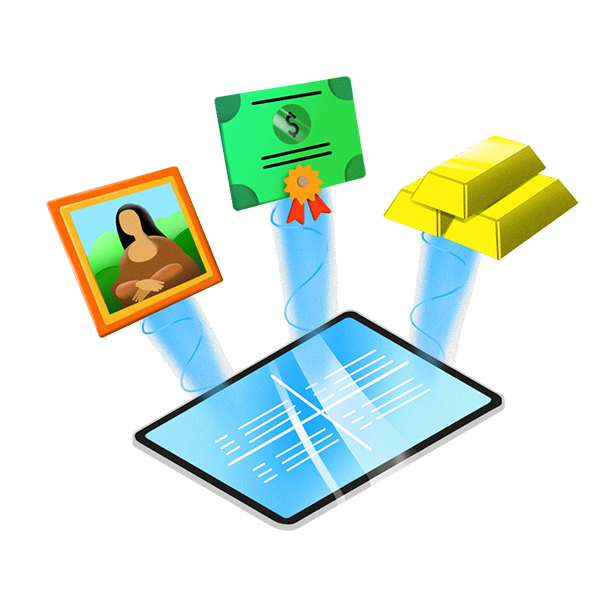Lesson 1
What are real-world assets (RWAs)?
The Foundation of Tangible and Intangible Value in the Economy

What are real world assets (RWAs)?
Real World Assets (RWAs) are fundamental to modern economies, representing physical and digital items that hold real world value. These assets serve as key components of financial markets, influencing everything from investments to corporate balance sheets.
Categorizing RWAs
RWAs can be broadly categorized into tangible and intangible assets.
Tangible assets
As the name suggests, tangible assets are those which physically exist in the real world. Common examples of tangible assets are commodities like energy and precious metals. In the agricultural world, tangible assets could be livestock, real-estate, vehicles and heavy machinery.
Intangible assets
Intangible RWA’s are assets with non-physical forms of value. In finance, stocks and bonds are some of the most commonly used intangible assets. In today’s digital world, they show up in intellectual property as patents, copyrights, trademarks, and trade secrets. Almost anything digital could be considered an intangible asset like a company’s customer list, your internet domain name, or recording and publishing a new music album.

The Role of RWAs in Traditional Finance
RWAs play a significant role in traditional financial systems. They are essential components of balance sheets, used to determine a company’s financial health and borrowing capacity. Banks and financial institutions leverage RWAs as collateral for loans, enabling businesses and individuals to secure financing. For example, real estate properties are frequently used to back mortgages, and stocks or bonds can serve as collateral for margin loans. The ability to use RWAs in this manner underscores their importance in liquidity generation and financial stability. However, while RWAs provide economic value, they also present challenges that can complicate their management and utilization.
